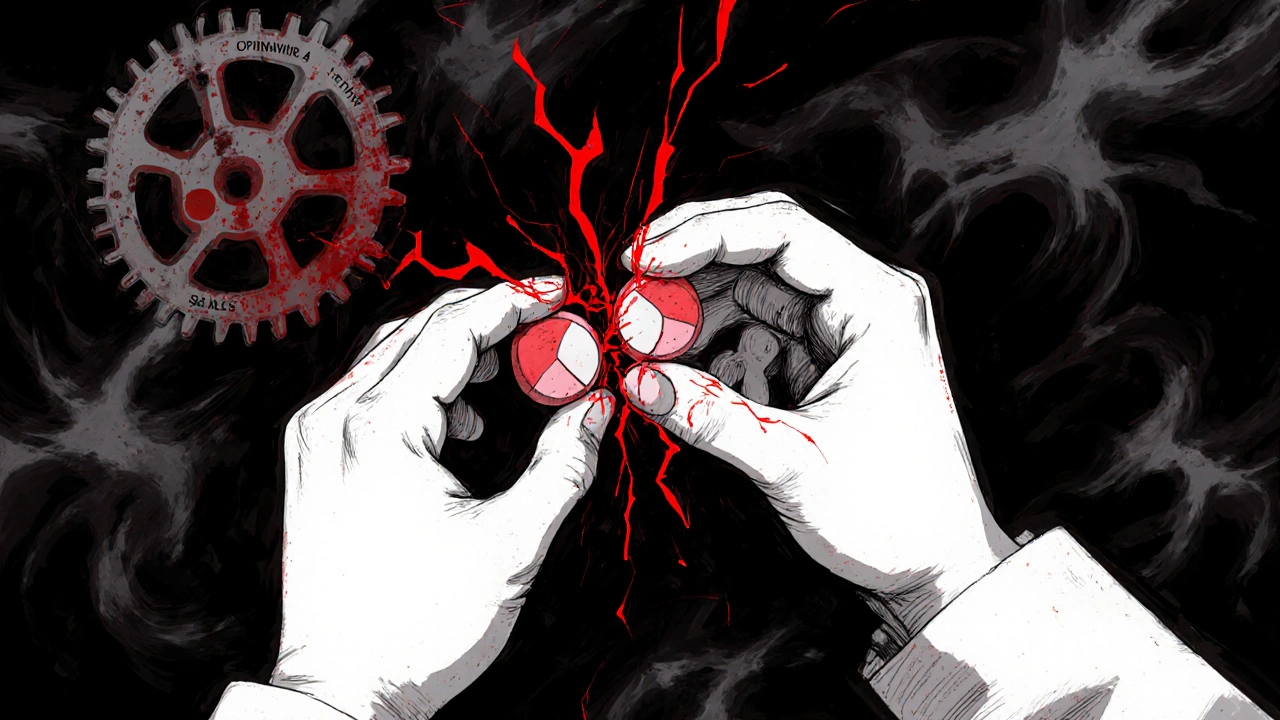Lopinavir/ritonavir boosting uses ritonavir to inhibit CYP3A4 and boost lopinavir levels, but this creates dangerous interactions with hundreds of common drugs. Learn how this HIV treatment can cause fatal side effects if interactions are missed.
Ritonavir Boosting: How It Enhances HIV Medications and Why It Matters
When you hear ritonavir boosting, a technique used to increase the effectiveness of other HIV drugs by slowing their breakdown in the body. Also known as pharmacokinetic boosting, it's not a drug on its own—it's a trick doctors use to make other medicines last longer and work harder. Ritonavir, originally an HIV protease inhibitor, turned out to be a powerful tool for blocking the liver enzyme CYP3A4. That enzyme normally breaks down drugs too fast. By inhibiting it, ritonavir lets other medications build up in your system at lower doses, reducing side effects and making treatment simpler.
This method is especially important for protease inhibitors, a class of HIV drugs that block the virus from copying itself like darunavir, lopinavir, and atazanavir. Without boosting, many of these drugs would need to be taken multiple times a day in high doses, increasing the risk of nausea, diarrhea, and liver stress. With ritonavir boosting, some patients take just one pill a day. It’s not magic—it’s chemistry. But it’s chemistry that’s saved millions from complex regimens. The same principle applies to newer boosters like cobicistat, but ritonavir remains the most widely used because it’s been around longer, studied more, and works reliably across different combinations.
It’s not without trade-offs. Ritonavir boosting can raise cholesterol, cause stomach upset, or interact with other meds like statins or blood thinners. That’s why doctors carefully check your full drug list before starting. It also means you can’t just swap pills on your own—even if two drugs look similar, the boosting effect changes how they behave in your body. This is why antiretroviral therapy, the standard combination treatment for HIV that includes multiple drugs targeting different stages of the virus is so tightly controlled. A small mistake in dosing or timing can lead to resistance, which makes future treatment harder.
What you’ll find below are real, practical guides on how boosting fits into daily HIV care—what to expect when starting, how to manage side effects, how to spot dangerous interactions, and how newer alternatives are changing the game. These aren’t theory pages. They’re written by people who’ve seen patients struggle with pill counts, stomach issues, and confusion over drug labels. You’ll learn how to talk to your pharmacist about boosting, how to avoid common mistakes with other meds, and what to do if you miss a dose. This isn’t just about HIV drugs—it’s about making sure your treatment works without wrecking your life.

